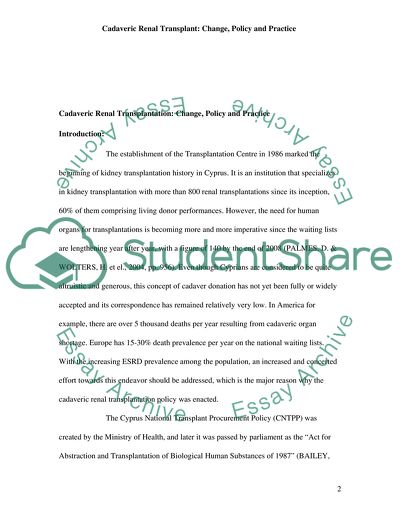Cite this document
(Cadaveric Renal Transplantation: Change, Policy and Practice Research Paper, n.d.)
Cadaveric Renal Transplantation: Change, Policy and Practice Research Paper. Retrieved from https://studentshare.org/health-sciences-medicine/1724448-change-policy-and-practice
Cadaveric Renal Transplantation: Change, Policy and Practice Research Paper. Retrieved from https://studentshare.org/health-sciences-medicine/1724448-change-policy-and-practice
(Cadaveric Renal Transplantation: Change, Policy and Practice Research Paper)
Cadaveric Renal Transplantation: Change, Policy and Practice Research Paper. https://studentshare.org/health-sciences-medicine/1724448-change-policy-and-practice.
Cadaveric Renal Transplantation: Change, Policy and Practice Research Paper. https://studentshare.org/health-sciences-medicine/1724448-change-policy-and-practice.
“Cadaveric Renal Transplantation: Change, Policy and Practice Research Paper”, n.d. https://studentshare.org/health-sciences-medicine/1724448-change-policy-and-practice.


